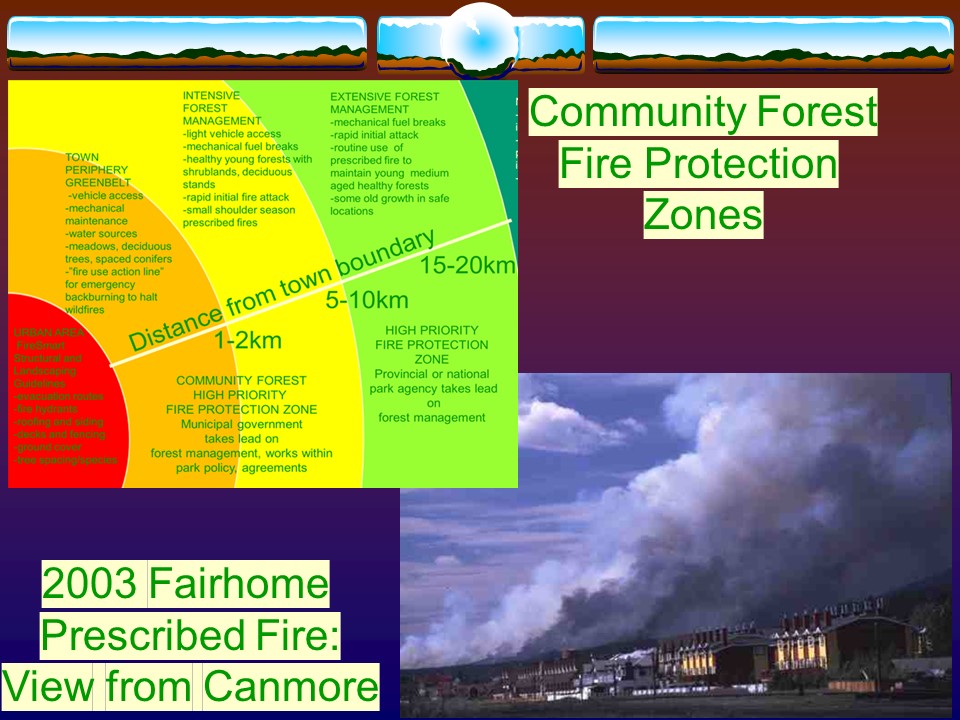Indigenous burning once maintained meadows, shrubfields and thrifty young trees in the valley bottoms and travel corridors of western Canadian forests. Ongoing fire suppression by Parks Canada and provincial agencies is allowing forests to age to a critical state. Forests cover is now dense, and the forest floor is covered with deep layers of dead and decomposing wood. When ignited, by lightning, arson, or an accidental source, these decadent forests explode into conflagrations that destroy communities– Kelowna (2003), Slave Lake (2011), Fort McMurray (2014), Lytton (2021), Shuswap Lake (2023), and Jasper (2024). Disastrous burns often ignited from 2-10 km away from the towns but spread rapidly with dry weather and high winds. They usually occur during extreme periods of drought when the regional wildfire agencies are already overwhelmed. Moreover, with so many communities in their regions, it is impossible for any agency to plan and deliver the custom pre-fire risk reduction (mechanical forest thinning, fuelbreak construction, prescribed burning) that each community needs.
In the fall of 2023 I gave several presentations to the Canmore community and cooperating municipal, provincial, and federal agencies to stimulate thought on a new way to approach this critical danger. The proposal is to establish “community forest” zones around towns like Banff and Canmore where the towns themselves would assume the primary responsibility for managing fire risk to a distance of 5-10 km from their boundaries. Under agreement, towns-at-risk would hire a foresters and fire smart specialists. Likely working within the municipal fire departments, and partially subsidized by harvesting wood within their community zone, their task would be to reduce risk and to formulate and rehearse action plans for when wildfires occur. Many towns already have already achieved exceptional “Fire Smart” standards within their boundaries. The “community forest” approach would allow these communities to extend this fire risk reduction work to a scale where it can make a substantial difference.
You can download slides from the program here:
The Town of Canmore has recently used this approach to negotiate an agreement with Alberta government agencies:
Community Fuel Breaks Around Canmore
Here are some links to then/now images that indicate the scale of historic Indigenous burning and how much work needs to be done:
Town of Canmore and middle Bow Valley
Town of Jasper and Athabasca Valley
Click on images to see then/now contrasts.
